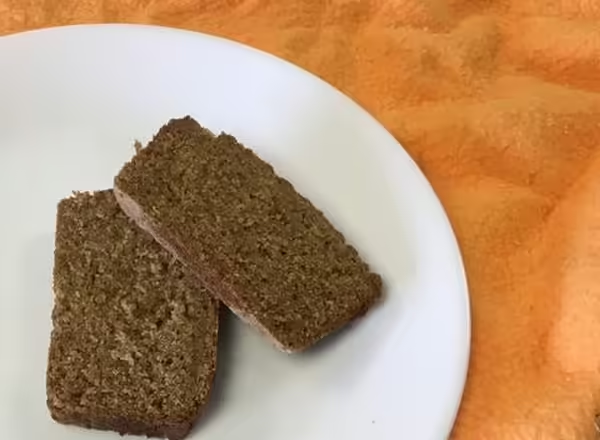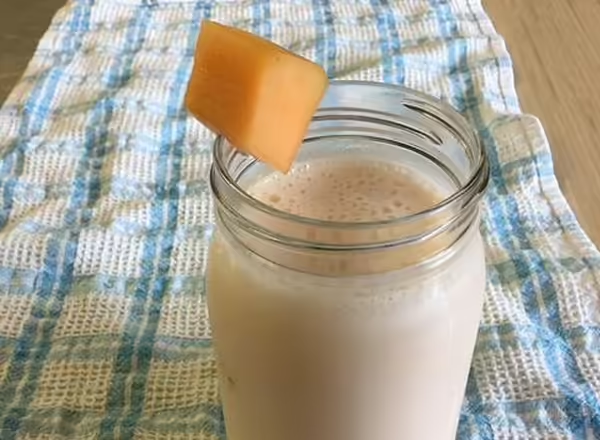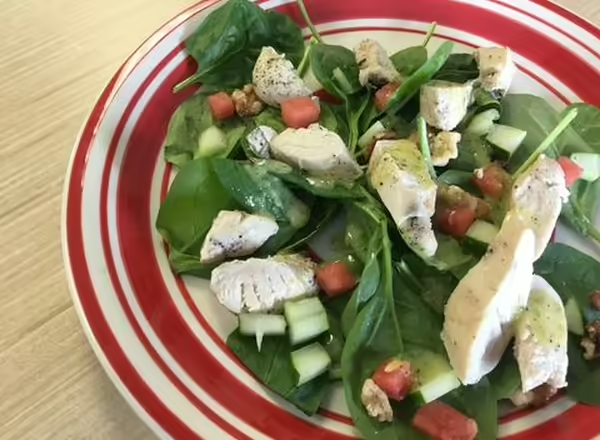
Summer means lot of choices for fresh fruits and vegetables, including melons. Today I want to share some recipes with melon I developed for a program back in 2018 for those receiving Community Supported Agriculture subscriptions. I shared tips and recipes on using specialty foods found in their boxes and using up a large amount of the same food during peak seasons. (I'm looking at you, sweet corn!) An unexpected standout was definitely the quick bread using cantaloupe!
Nutritionally, 1 cup of chopped melon – no matter the variety – contains around 60 calories, 15g carbohydrate, 1g fiber, and is a source of vitamins and minerals, including vitamin C and potassium. When the flesh is pink or red, these melons are also a source of vitamin A. (Melons whose flesh is light-colored have some, but less vitamin A.) Like other fruits, melons are not a significant source of fat, protein, or sodium.
- Buy: When shopping at a store, choose melons that are firm and heavy, without soft spots or cracks. If you are growing melons in your garden, read more about picking ripe melons with Illinois Extension's Home Vegetable Gardening resources.
- Price: Fresh melons range in price. Watermelon costs $0.23 per cup up to $0.74 per cup for honeydew, according to the U.S. Department of Agriculture. Due to their size, some large melons can be expensive upfront, so have a plan for what you're going to do with all that fruit.
- Storage:
- If your melon is ripe, store it whole and uncut in the refrigerator. Cool temperatures will lengthen its shelf life. If the melon still needs to ripen, leave it at room temperature for a day or two.
- Once cut open, store extra melon in food-safe containers with lids. Eat within a few days, because melons, particularly watermelon, will become overly soft or soggy with time.
- Prepare: Over the years, melons have been part of food recalls due to foodborne illness. Knives used to cut into melons can drag bacteria and other microorganisms from the rind into the flesh of the melon. To reduce the risk of foodborne illness, thoroughly wash whole melons before cutting, particularly cantaloupe that has a webbed rind. A clean paper towel or vegetable brush can help remove soil and microorganisms. To see this in action, watch How to Prepare a Melon from Iowa State University Extension and Outreach.
- Preserve: If you can't eat all your melon, then put your boiling water bath canner to use and make Watermelon Rind Preserves or Cantaloupe Pickles. You can also freeze melons and use them straight from the freezer in smoothies, to snack on frozen, or as fruit ice cubes to flavor water.
- Eat: I mostly eat melons on their own as a side dish to my meal. But if you want to try melons in unique recipes, check out some of mine below. I also like Search from Extension Foundation, where I find recipes from Cooperative Extensions all around the country. There are a bunch that include different types of melons, including salsas and salads, drinks like smoothies, frescas, coolers, and infused water, kabobs, fruit tacos and pizza, and soup like gazpacho. Some recipes add chilis, herbs, and vinegar.
Resources:
- Colorado State University Extension, Food Smart Colorado, Keeping Food Safe: Cantaloupe
- Iowa State University Extension and Outreach, Selecting and ripening melons
- Michigan State University Extension, How to determine a ripe melon and Michigan Fresh: Melons
- Ohio State University Extension, Selecting, Storing, and Serving Ohio Melons
- Purdue Extension, FoodLink, Cantaloupe
- South Dakota State University Extension, Cantaloupe
- Texas A&M AgriLife Extension, Dinner Tonight, Tips & Tricks: How to Select the Perfect Melon
- University of Nebraska-Lincoln, Melon
Post originally published in 2014 under Healthy Eats and Repeat; content updated in 2023.
About the Author: Caitlin Mellendorf is an Illinois Extension Nutrition and Wellness Educator serving DeWitt, Macon and Piatt Counties in Central Illinois. She is a Registered Dietitian and her work focuses on helping community members gain the knowledge, skills and tools to live healthier, more nutritious lifestyles. This includes providing programs and answering questions about heart health, diabetes, food safety, food preservation, grocery shopping and cooking. You can reach Caitlin by email at chuth2@illinois.edu or call 217.877.6042.




